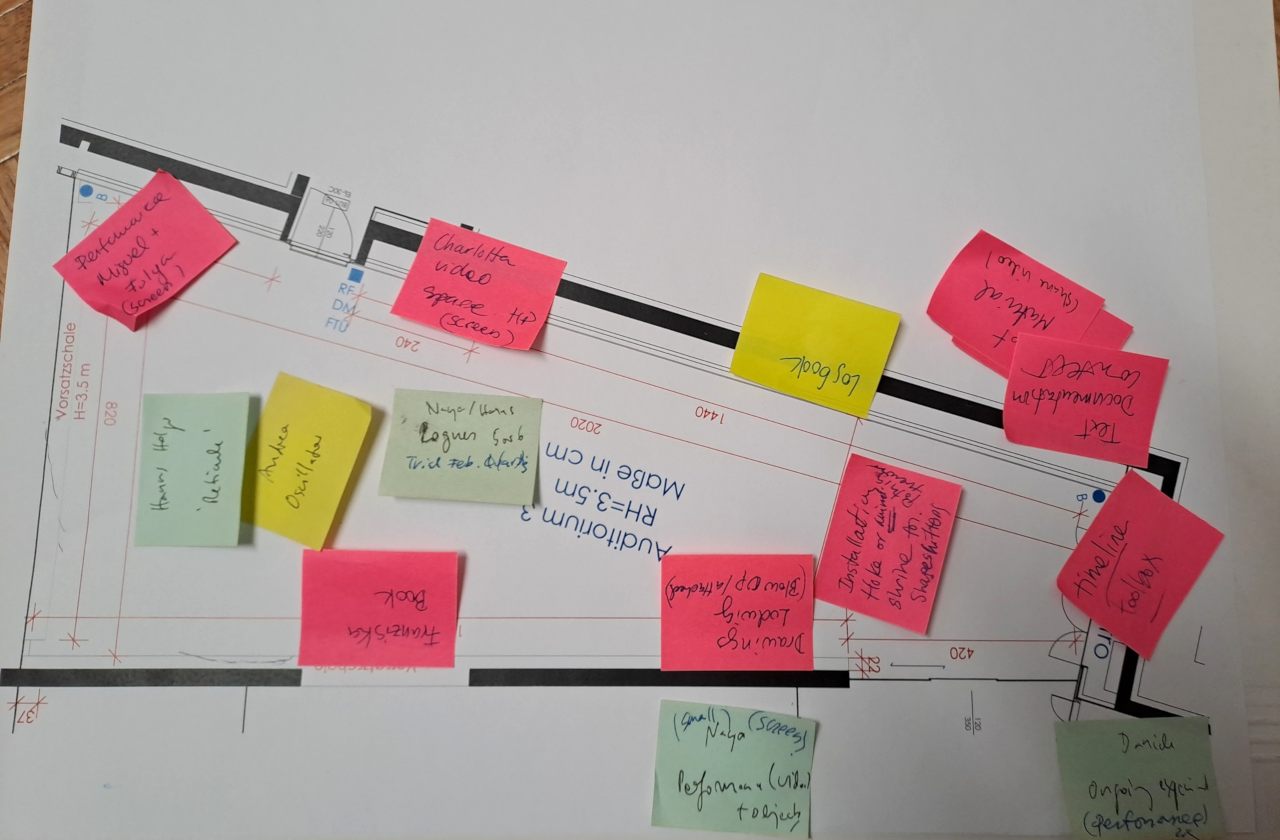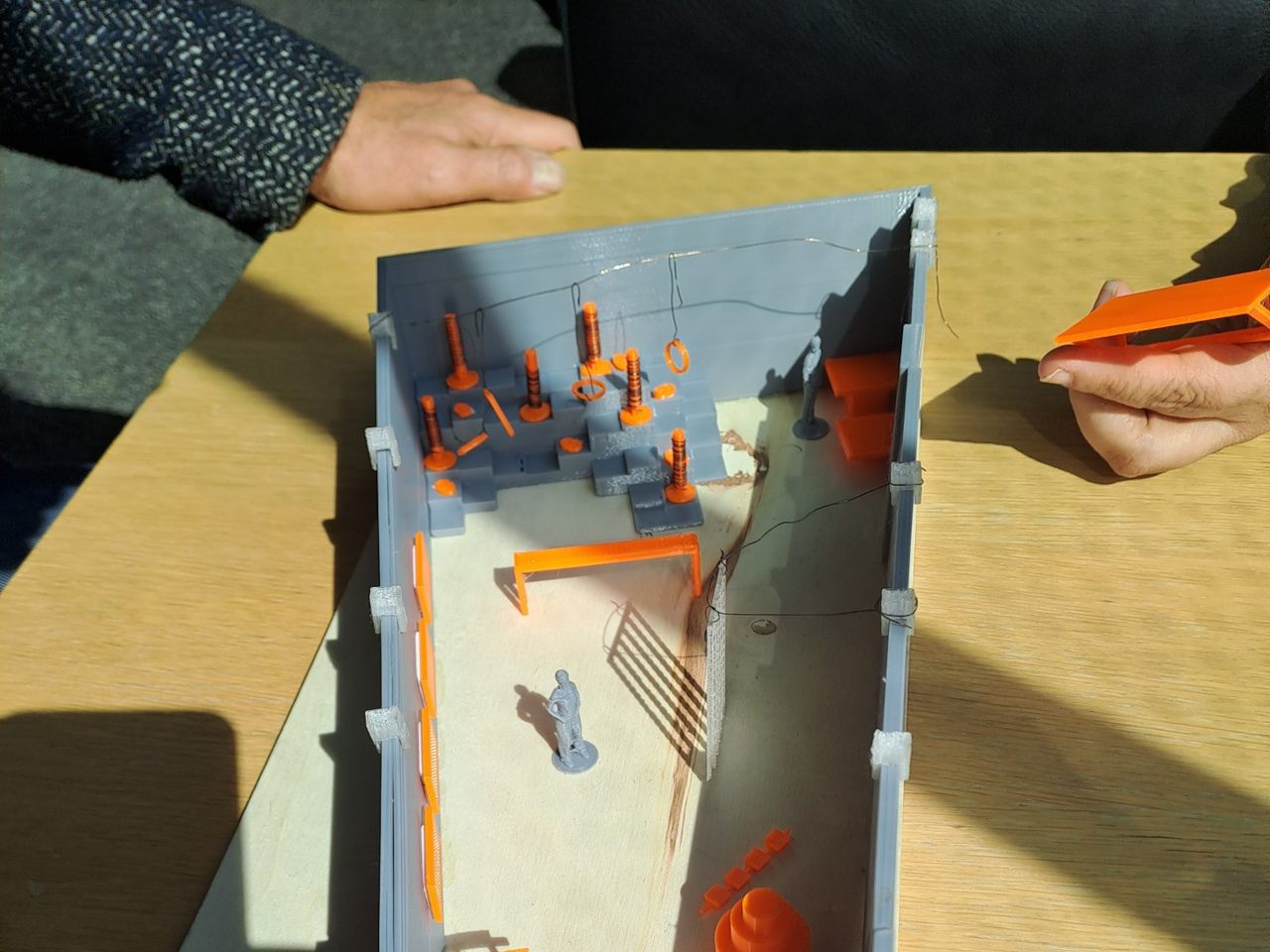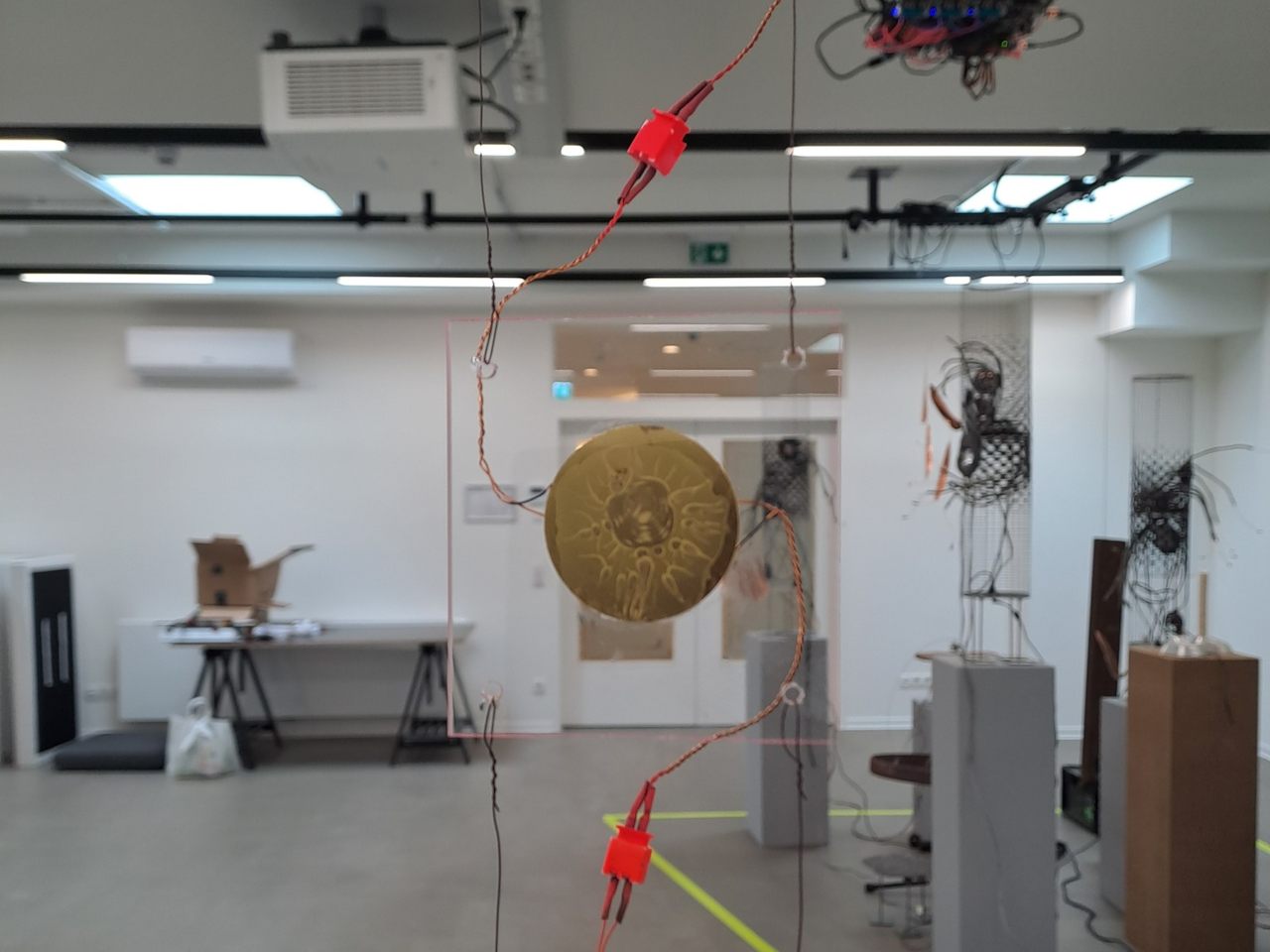To Exhibit Artistic Research

simularr was, from the very beginning, planned to conclude with an exhibition, among other things, that brings together the distinct approaches developed over the project’s time span. A lot has been said and written about the exposure or exposition of artistic research, and we have constantly employed means to expose our research to the fellow team members, using digital platforms such as the Research Catalogue or physical spaces in form of ‘meta-expositions’. The idea of meta exposition being that artefacts and notations that had already be exposed within the group as we were working together would be brought back and united in a space to form of a database that we can than rearrange, interrogate, interrelate.
A different question now is the exposure to a general audience. We are not of the belief, as is a not uncommon view, that making performances, concerts, exhibitions is already the objective or embodiment of artistic research as such. Neither do we believe that placing an exhibition at the end of a project has a pedagogical or ‘art mediation’ role. We are not ‘presenting and explaining the results of our research’. If one takes artistic research seriously, one has to trust in the quality of the artistic propositions to speak for themselves, which is not the same as to say that they are a means in themselves. They are witnesses to a long and transformational process that the various people had participated in.

Then what is a ‘good’ way to exhibit artistic research? The straight forward answer is: to give space to the rich network of interrelations of the materials chosen. This is of course a ‘curatorial perspective’, where the selection, editing, further development of artefacts and propositions is at the centre. We began by collecting sticky notes of everything that we considered candidates for the show. The exhibition space, a one hundred or so square metres trapezoid windowless room (except for the entrance) also determines what would work or how much was feasible. While avoiding the danger to put too many things inside, we wanted to make sure that everyone that worked with us during the years was somehow present. We believe that if the exhibition is strong, it would not matter if a ‘position’ is small or large, as everything should be really suspended in the possibilities of drawing a trajectory from one object to another.

Another important factor was feasibility. We did not allocate a particularly large budget to the exhibition project, so we had to rely mostly on what was already there, and a smaller group present for setting up the works. Some works were rather new, coming out of the recent interval, or unfinished, and also giving us the opportunity to work them out ‘properly for an exhibition’ for the first time. This in turn required a suitable working space for a test setup. Luckily, by winter 2024, the new artistic research laboratory of the Mahler university, quARtier, was ready to be used, and so our preparatory process oscillated between intricate small scale work at Reagenz, scanning and inventorising papers at the TU Graz, and trying out installations at their approximate scale at the quARtier in Klagenfurt.